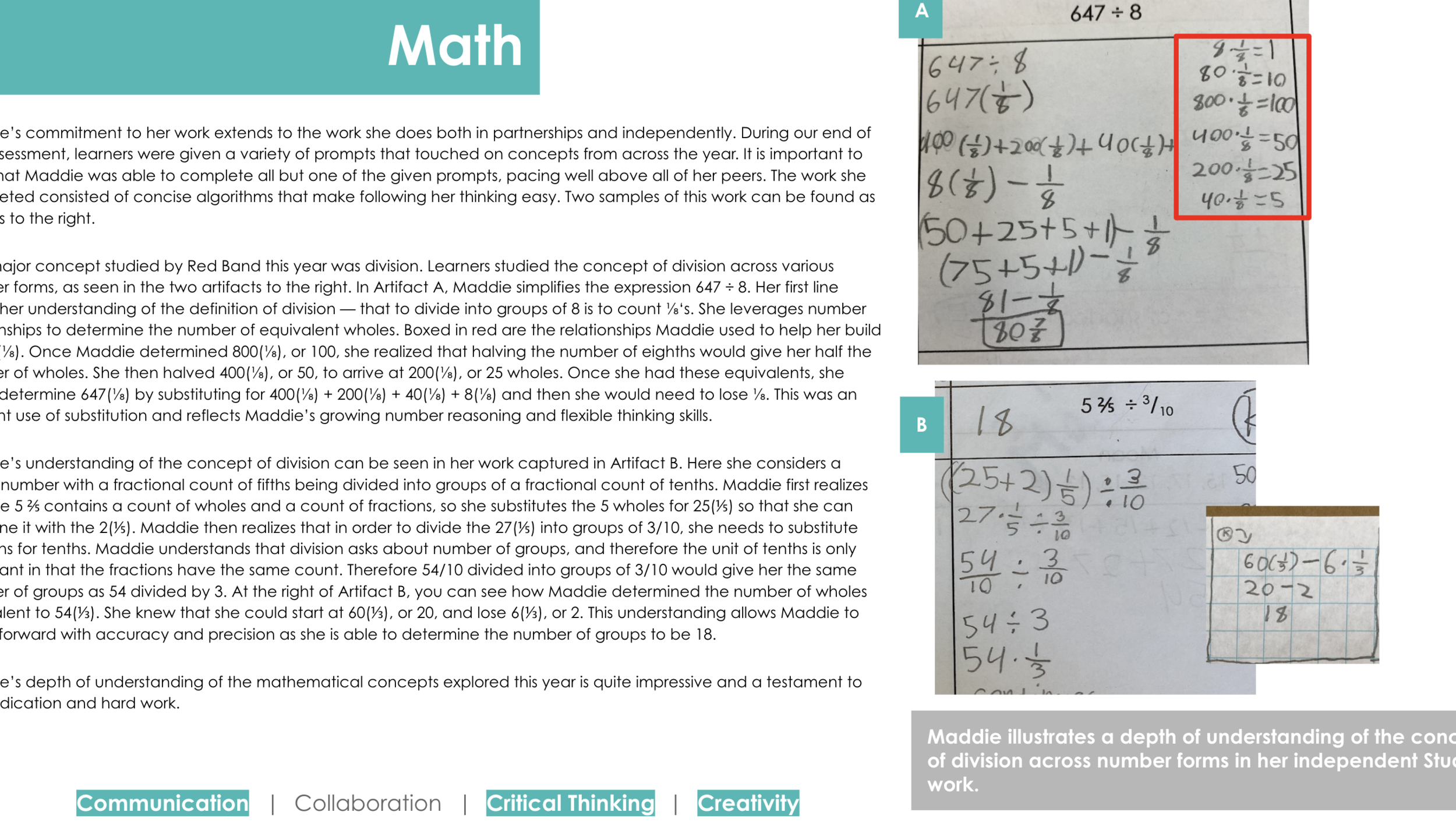Artifact Portfolios: Reports of Progress
Currently our teaching team is in the midst of one of the most reflective, collaborative, and important processes we undertake throughout the year: we are writing our learners’ “Artifact Portfolios.” We don’t give grades. We don’t issue a simple report card every six weeks. We don’t simply provide parents with general comments on their child’s progress. Instead, twice a year our teaching team works together to craft a lengthy narrative report on each child, which is captured in a portfolio-style layout that is positioned around “artifacts” of the child’s work. Artifacts are captured throughout the semester and take the form of photos, screenshots, excerpts of writing, short videos, and transcripts and most of the time are captured through the regular, every day work cycle, and not necessarily just through more high-stakes assessments or on-demand activities.
Remaining true to our learner-centered identity, the goal of the Artifact Portfolio is to report on the hard work of learning. Not only does the Artifact Portfolio contain analysis of the learner’s work across the four disciplines of math, science, literacy, and computer science, but we also examine learning from four crucial lenses: critical thinking, communication, creativity and collaboration. While most artifacts are not used to discuss all four lenses, we often see overlap among these lenses.
With such a steadfast focus on the learning process at Long-View, no single moment is significant; rather, the story that connects the moments provides a more complete picture of the arc of a learner’s experience. Considering the arc of the learner’s experience, teachers observe: 1) how a learner entered an experience — the knowledge, skills, and mindset he/she possessed, 2) the feedback provided, 3) the child’s receptiveness to the feedback or coaching, and 4) the transformation of the learner based on the feedback received. As best we can, we try to capture this information and present the information in a narrative report, along with exemplar artifacts and context around those particular artifacts. We work to capture for parents how we immerse learners in challenging content, engage them in that work in the most authentic way possible, and observe their development as individuals and learners as they engage in the work.
No doubt that throughout the process of learning, our children experience failure, as struggle is par for the course, if not expected, in the learning process. But of concern is the way learners respond to failure, the coaching learners need and receive, that which emerges through the struggle (the change or growth that occurs), and collecting and analyzing artifacts that provide evidence of the learning that has occurred or is occurring.
Interestingly, our teaching team works collaboratively to write the Artifact Portfolios. The process happens year round in a sense, as we observe the kids at work on a daily basis, and take copious notes. We also capture hundreds of artifacts a week and then regularly engage in discussions as a team of teachers in which we analyze the artifacts we are capturing, deeply discuss the progress of a particular child, or grow theories about the psychology of a particular child and collaborate to imagine experiences or coaching we could provide that would nurture important breakthroughs. A month before the end of the semester, the process of writing gears up, and we begin writing the Artifact Portfolios. One particular teacher takes the lead on each section, but many people add content, revise, and edit. It is an ambitious writing task but it invites deep reflection and analysis about each child and about our own work as teachers seeking to cultivate transformative learning.




